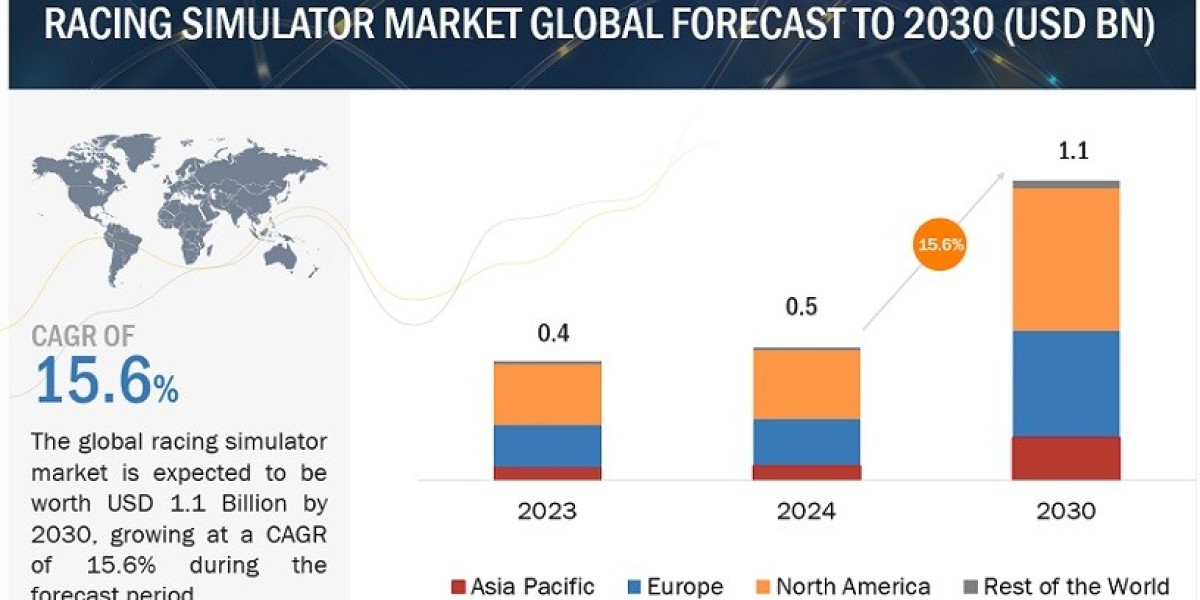The racing simulator market size is estimated to grow from USD 0.5 billion in 2024 to USD 1.1 billion by 2030, growing at a CAGR of 15.6%. The popularity of esports has surged in recent years, and racing simulators have become a significant part of this trend. Games like iRacing, Gran Turismo Sport, and Assetto Corsa Competizione have thriving competitive scenes, attracting both casual players and professional racers looking to enhance their skills and compete against others online.
Steering Wheel segment is anticipated to be the fastest growing racing simulator component during the forecast period.
Steering Wheels is expected to witness substantial growth in the racing simulator market as it is the primary contact between the player and virtual racing. It provides tactile feedback that simulates the forces experienced while driving a real race car, such as resistance when turning, vibrations from road surfaces, and the feeling of traction loss. This feedback is crucial for immersion and realism, allowing players to accurately gauge vehicle dynamics and make precise adjustments to their driving technique. Additionally, force feedback steering wheels often feature customizable settings, such as sensitivity and force levels, allowing players to tailor the experience to their preferences and skill levels. High-quality force feedback systems can provide a more realistic and immersive driving experience, enhancing the overall enjoyment and realism of the racing simulator. While other components such as pedals, VR headsets, and motion platforms also contribute to the immersive experience of a racing simulator, the force feedback steering wheel stands out as a critical component that directly impacts the player's ability to interact with and control the virtual race car.
Download PDF Brochure @ https://www.marketsandmarkets.com/pdfdownloadNew.asp?id=247895850
Compact racing simulator segment holds the largest market share in the racing simulator market during the forecast period.
Compact racing simulators have captured a significant market share within the racing simulator industry, primarily due to their accessibility, space efficiency, and portability. These simulators offer an accessible entry point into the world of racing simulation, appealing to casual gamers and enthusiasts with their lower price points than larger setups. Their compact design makes them suitable for consumers living in smaller spaces, such as apartments or dormitories, where dedicated gaming rooms are often not feasible. Additionally, the portability of compact racing simulators enables users to easily transport their setups to various locations, whether it be gaming events, LAN parties, or simply different rooms within their homes. Furthermore, the ease of setup associated with many compact simulators makes them appealing to consumers who may lack the technical expertise or time to assemble more complex rigs. Despite their smaller size, these simulators often feature high-quality components, including force feedback steering wheels and VR compatibility, ensuring a realistic and immersive racing experience. North America has the highest share of compact racing simulators backing up Europe. People in North America prefer compact racing simulators over full-scale ones due to the portability and racing while at their homes instead of going to training centers. In contrast, Europe has a higher share of full-scale simulators as racing teams prefer practicing and upskilling their drivers by making them practice on these professional racing simulators.
North America is estimated to be the largest racing simulator market during the forecast period.
North America boasts a large market for racing simulators due to several factors. The country has a strong motorsports culture, with events like NASCAR and IndyCar attracting a large fanbase each year. This results in a high demand for racing simulators among enthusiasts who want to experience the thrill of high-speed racing from their homes. Additionally, North America has a strong gaming community, with a substantial proportion of the population engaging in gaming as entertainment. Racing simulators fulfill the audience's demand by offering an immersive and realistic experience that satisfies both casual gamers and dedicated enthusiasts. North America leads in developing and adopting gaming hardware and software, ensuring gamers have access to the latest and most cutting-edge racing simulation technology. Furthermore, the popularity of esports in North America has contributed to the growth of the racing simulator market. Esports racing leagues and competitions attract several fans and participants, further boosting the demand for high-quality racing simulators.
Request Free Sample Report @ https://www.marketsandmarkets.com/requestsampleNew.asp?id=247895850



